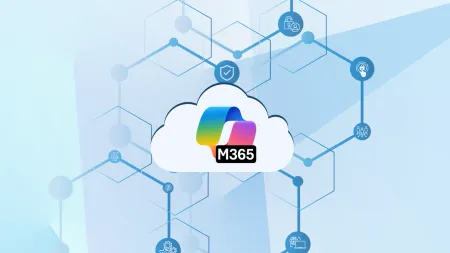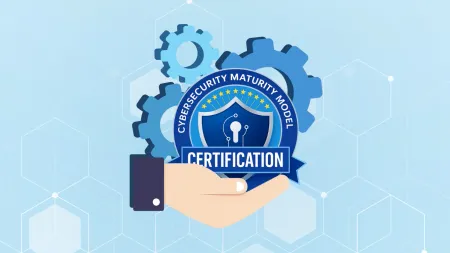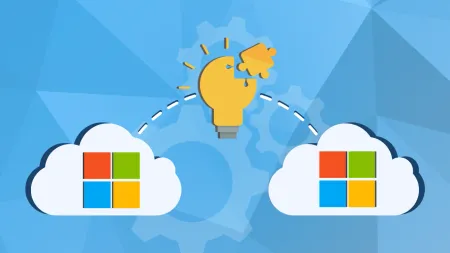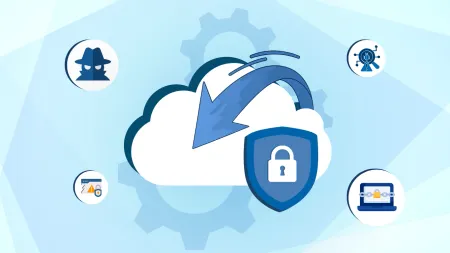CMMC Compliance Audit Preparation: A Complete Checklist for Small Businesses
Preparing for a CMMC compliance audit is critical for DoD contractors. Use this checklist to perform a gap analysis, assess CMMC readiness, and prepare for a Level 2 assessment.
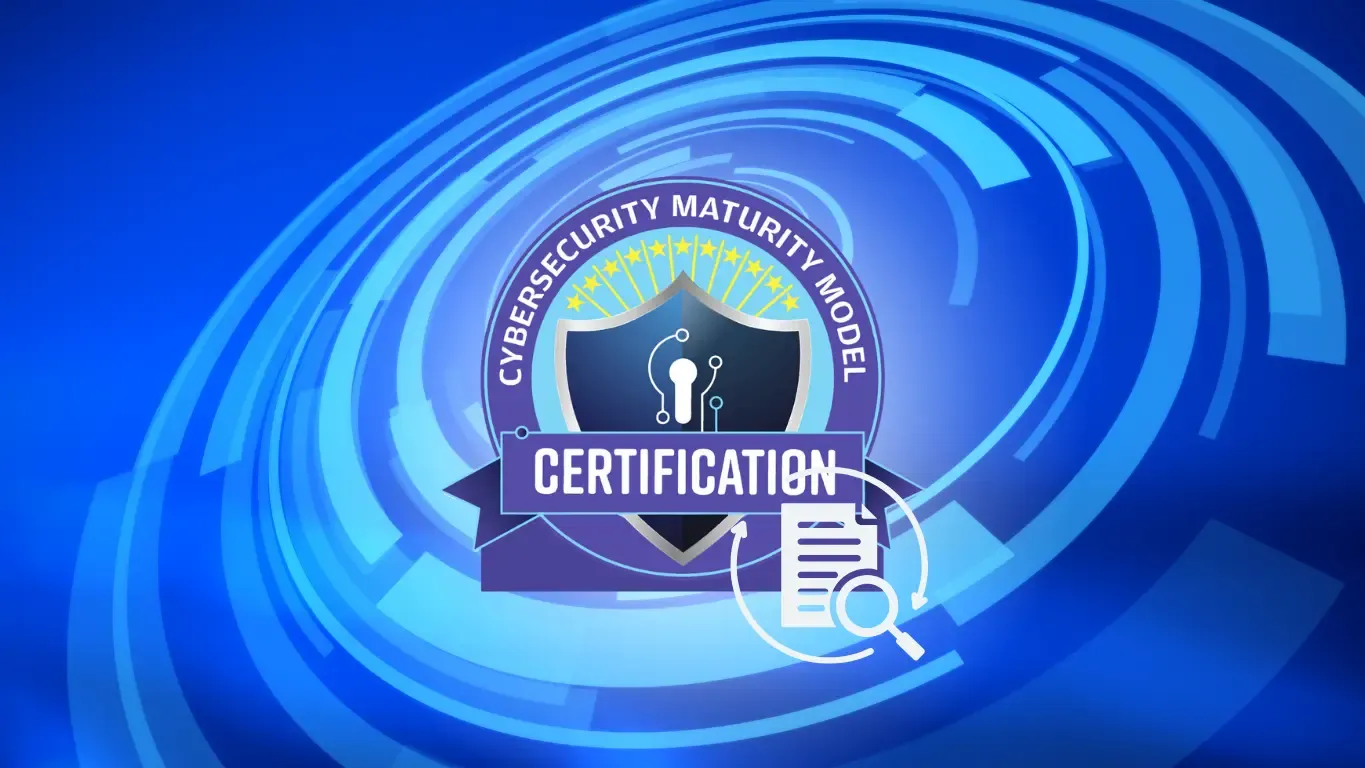
CMMC Compliance Audit Preparation: A Complete Checklist for Small Businesses
The Department of Defense (DoD) implemented the Cybersecurity Maturity Model Certification (CMMC) to ensure that contractors consistently adhere to cybersecurity standards that dictate how one should manage controlled unclassified information (CUI). Proving CMMC compliance can be a complicated process due to the number of requirements, but all contractors, subcontractors, and other organizations involved in the handling of sensitive data must comply.
Read on to learn how to best prepare your team to confirm compliance with all CMMC policies.
CMMC Compliance Checklist for Small Businesses
- Determine Your Required CMMC Level
The CMMC framework is split into three certification levels, with each one building on the previous level to ensure that the security protections are there as you deal with more and more sensitive information.
-
Level 1 focuses on basic cybersecurity hygiene and is intended for businesses that handle Federal Contract Information (FCI) and use tools such as antivirus software. Level 1 is targeted at businesses that handle less sensitive information.
-
Level 2 is for companies managing Controlled Unclassified Information (CUI). Policies regarding regular cybersecurity training and data encryption are introduced at this level.
-
Level 3 concerns companies that manage the most sensitive data in the defense supply chain. Businesses must have advanced systems to protect exclusive information, such as real-time monitoring, incident response plans, and risk management practices.
Before fully engaging in the CMMC compliance audit process, you should evaluate the type of data your company handles to understand how C3PAOs will evaluate your performance.
- Review NIST 800-171 Requirements
Level 2 CMMC compliance is directly tied to the requirements of the National Institute of Standards and Technology Special Publication 800-171 (NIST SP 800-171). To be compliant at this level, companies must implement the 110 security controls specified in NIST SP 800-171 split into 14 categories:
-
Access Control
-
Awareness and Training
-
Audit and Accountability
-
Configuration Management
-
Identification and Authentication
-
Incident Response
-
Maintenance
-
Media Protection
-
Personnel Security
-
Physical Protection
-
Risk Assessment
-
Security Assessment
-
System and Communications Protection
-
System and Information Integrity
It’s important that every contractor understands the necessity of these controls and has solutions or strategies in place to fully enact them.
- Conduct a Gap Analysis for CMMC Readiness
A key part of CMMC audit preparation is to take stock of your existing policies and IT systems by performing a gap analysis. The analysis should be conducted with the intent to show how the current state of your organization compares to the security requirements for each CMMC level, identifying areas where your cybersecurity features need to improve to reach the requisite standard. Once you know where your weaknesses are, you can make informed changes to your practices to increase the likelihood of a successful audit.
- Develop Policies and Procedures for CMMC Compliance
All contractors and companies associated with the DoD need to have an overarching program that defines CMMC policies and procedures. Proper documentation is needed to prove compliance and prevent any delays in the certification process. One key element of that strategy is a System Security Plan (SSP). An SSP is a mandatory living document that details the tangible security practices that your organization will follow to keep CUI secured, its relationship with external service providers, and adherence to CMMC requirements for their level. It should serve as the center point of your cybersecurity program and is critical to the audit process. The SSP should also be reviewed going forward and updated if you make any substantial changes to your cybersecurity systems or operations.
You should also draft other supplementary pieces of compliance documentation such as an incident response plan and a shared responsibility matrix.
- Train Employees on Cybersecurity Best Practices
Effective cybersecurity isn’t conducted by one person or an isolated IT department. It must be a focus of the entire organization. Security awareness training is a common method of communicating this outlook to all your employees. Proper education teaches people how to take part in best practices, handle data, and minimize the risks of human error. Training must be treated as an obligatory activity and session materials should be updated to maintain alignment with regulations as they evolve. To further reduce the chance of mistakes compromising your security, you can implement access control measures and least privilege policies to shield user data and define the level of permissions needed to access private information.
- Secure IT Systems and Data Storage
Secure data storage is a fundamental requirement for CMMC compliance. Encrypting sensitive CUI shows C3PAOs that your company has the infrastructure and expertise to be trusted with important data. The best encryption tools don’t just protect the data that stays within the organization. You also need to implement client-side, end-to-end encryption to provide cybersecurity for data that needs to be shared for any project. Attribute-based access control (ABAC) supplies further control over who can access data and why.
Multi-factor authentication (MFA) is another method of cybersecurity. Cybercriminals are deploying increasingly sophisticated attacks to forcibly enter IT systems. MFA offers an additional shield against bad actors by raising the amount of information needed to gain access as an authorized user.
- Prepare for a CMMC Level 2 Assessment
When the time comes for a CMMC audit, the C3PAO will be looking for substantial evidence that your organization has the structures and policies in place to earn a certification. There is no set duration for how long an assessment should take as the size and complexity of the organization will influence the amount of time needed to evaluate your position. A level 2 assessment usually takes a few days. To verify your cybersecurity proficiency, auditors will review the following pieces of information:
-
Cybersecurity policies that comply with NIST SP 800-171 and CUI requirements
-
A System Security Plan
-
A risk assessment report
-
A Plan of Action and Milestone (POA&M) that explains how the company will close any gaps in security. These issues must be remediated within 180 days.
To qualify for CMMC level 2, organizations must meet at least 80% of the requirements. Level 2 organizations must complete an audit or self-assessment every three years. They must also submit a formal affirmation of their compliance on a yearly basis.
Top Tools to Assess Your CMMC Compliance Status
To give yourself a greater idea of how your organization will fare during an assessment, here are some materials you can use to review your CMMC compliance status:
CMMC Assessment Guides – Assessment guides such as the one offered by the DoD provide handy comparisons to discern if your organization is ready to be deemed CMMC compliant.
NIST SP 800-171 Self-Assessment Tool – These tools help businesses review their systems and policies to see how well they implement level 2 requirements.
Microsoft GCC High & Azure Government – Microsoft GCC High is version of Microsoft 365 hosted in a U.S. sovereign cloud and paired with Microsoft Entra ID in Azure Government. It is designed for DoD contractors that store, process, or transmit CUI, are subject to International Traffic in Arms Regulations (ITAR), or must meet DFARS 7012 and CMMC compliance requirements
CMMC Readiness Platforms – Readiness platforms are equipped with automated tools to provide gap analysis and support audit preparation to help you present your company in the best manner.
Common Challenges in a CMMC Compliance Audit and How to Overcome Them
Getting CMMC compliance is a complicated process that takes months, sometimes years, of work. Here are the most common points of difficulty that organizations meet during audit preparation:
Poor documentation – Vague or missing documents leave gaps in evidence that make it less likely that you will earn a certification. It’s important to maintain detailed documents for all security controls at all times.
Inadequate training – If your employees aren’t trained properly, then they may not have the necessary awareness to adhere to cybersecurity regulations or combat cyber attacks when they occur.
IT infrastructure – Organizations need to have substantial security tools in place before the audit begins. This requires a firm strategy from management to implement protective software and a smart use of resources.
Third-party risks – It’s common for businesses to use third-party vendors or suppliers to handle CUI or other examples of sensitive data. If you do so, then you must assess their CMMC compliance as part of your risk management plan and confirm the readiness of your supply chain.
Conclusion
CMMC compliance is crucial to verifying that contractors take cybersecurity seriously and create a culture where the safety of sensitive data is the highest priority. Nothing should be left to chance when dealing with information of this magnitude. Agile IT has helped government contractors develop and update technologies that help them remain compliant with CMMC and find the best solution for a myriad of digital situations. Our AgileThrive program can help contractors of all sizes prepare for an audit at every step of the process. If you would like some help in preparing for your next CMMC audit, contact us today.


